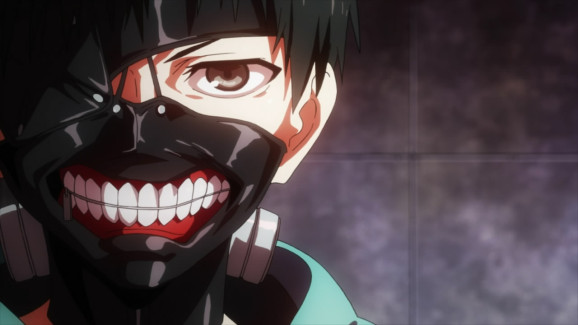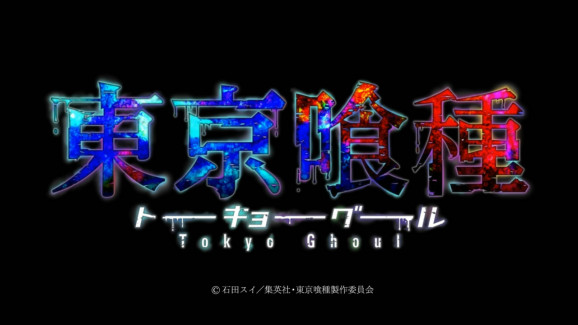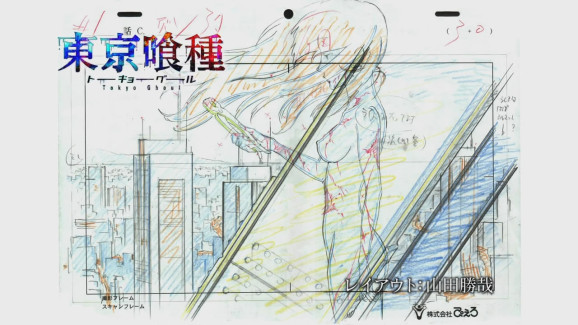Tokyo Ghoul
Sep 18, 2014This was originally a recap on the finale (with spoilers), posted on my old anime blog.
Welcome to Tokyo Ghoul, the show that puts a twist on the bunny girl trope. There was a good amount of hype for Tokyo Ghoul just prior to the premier episode. The manga seemed to have a faithful fan-base, the animation and characters all looked very slick. The question was, whether or not there was any substance under Ghoul’s slick exterior. At least that was the question for me. Well, was there?
Undeniably yes. Well, mostly. At its heart Tokyo Ghoul is a shounen anime, and I am not a fan of fiction that caters to little boys — or big boys who wear little boy pants. I despise characters who speak in the middle of fights, I hate when characters level up, or hide their best moves for no reason except to extend fight scenes. So, what does Ghoul do differently?
First, it moves really quick. Yes, the series was short at 12 episodes, but fights never last very long, so although there were some silly or downright awful segments, the show never lingered on them. It had things to do. Before I forget, what’s this series about anyway?
Kaneki Ken is an academic warrior, who meets the apparent girl of his dreams, only she turns out not to be so great. He ends up becoming a “ghoul,” and learns to deal with this over the course of the series. Of course, the main character gets help, especially when he’s taken into care by the proprietor of Cafe Anteiku, a front for the peace-loving ghouls of Tokyo’s 20th ward.
This, after he’s saved by the series’ main female character, Kirishima Touka. Each of Tokyo’s wards are generally ruled over by a certain group of ghouls, and as the series progresses we learn about some of the ghoul politics, as well as the ghoulbuster organization, CCG (Commision of Counter Ghoul). We watch different groups fight it out, while the ghouls of the 20th ward attempt to try to live their lives like normal people — who need to feed on human flesh once and while.
There’s a lot going on in Tokyo Ghoul, and the fictionalized city is designed well as the backdrop of the show. I’ll try to actually organize some thoughts about the series, before giving my rating — all without spoilers, of course.
First, the show looks really good. The characters look good, and move even better. The series was animated by Studio Pierrot, the same people who do Naruto and Bleach, but unlike those long-running series, Ghoul sort of remains top notch over its entire length, albiet a short one.
The show is fairly dark, both in theme and in design. It’s also an incredibly bloody show, that featured a host of censored scenes throughout the season. The censoring took on various forms as well, from inverting the color, to darkening out portions of screen. I’ll admit that it bothered me. I understand developers want to sell more Blu-Rays, but I’m uninterested in merchandise generally and prefer to actually see the show that I’m watching. Is that too much to ask for?

Have to censor a show with a mask like this.
The entire production of the show was top-notch; from the voice acting, to the opening and ending sequences, etc. Think of those long running shounen series, but with a darker edge. However, I’m not really impressed by production. I like stories, and like lipstick on a pig, music and some nice fluid animation will never make up for a good story. For me at least.
So how did I like the story? I enjoyed watching Kaneki’s journey, but honestly, I found him to be boring, whiny, and possibly the least interesting character on the show. Thankfully, his story recedes at times, allowing other characters to take front and center. Touka in particular, the hot-headed cafe worker, high school student, and powerful ghoul — not only gave Tokyo Ghoul some hair on its chest, but gave me ample opportunity for screenshots.
In the same way I described Ghoul as a “shounen” series, I would describe Touka as a “tsundere” type of female character. She is, but she’s a lot more. The series provides multiple instances, shows lots of examples and ultimately well-defines why she acts the way she does.
Although, with only 12 episodes and a large cast of characters, many of whom seeminteresting, there’s not much depth created and most of them get glossed over. It’s sort of to be expected for an anime based on an on-going manga, but if you want to get really close to a small group of characters, this isn’t that series.
I won’t spoil the actual larger story lines, but I will say that there’s a sort of underlying thread of mystery that’s woven throughout the entire series. While that mystery doesn’t actually get solved, it does tie things together in a way.
Of course, if you were hoping for a self-contained story in 12 episodes, you’re shit out of luck.Tokyo Ghoul ends in dramatic cliff-hanger style, with (as of the time of this posting) an unconfirmed second season.
So, let’s get to it. Overall, I liked watching this every week. The production of the show was very high. I mainly enjoyed the characters, the story kept my attention, and I thought the world building — the ghoul version of Tokyo — was built in an above satisfactory level. I’ll easily give Tokyo Ghoul a 3.5 out of 5 on my Kitsune Scale.

On my rating system 2.5 is completely mediocre, so I thought fairly highly of this series. Why I recommend this series to anyone? Sure, if you like darker well-paced sort-of-shounen action with sometimes silly characters, this may be for you.



You must be logged in to leave comments. Login or sign up today!
There are no comments - leave one to be the first!